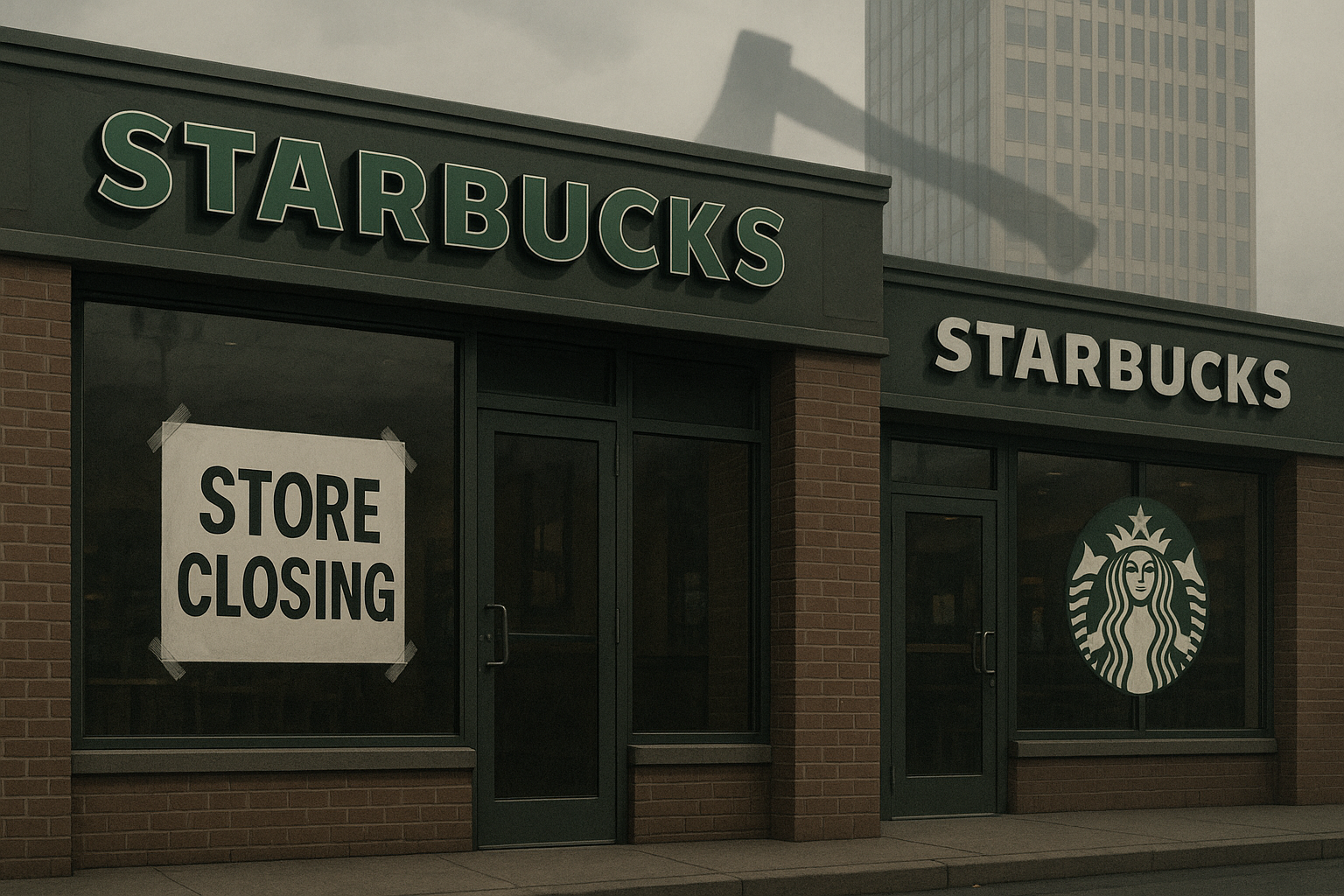The coffee giant announced Thursday it's shuttering about 1% of its stores and slashing roughly 900 corporate jobs. Classic new-CEO moves from Brian Niccol, who's barely had time to learn where the executive bathroom is located.
Look, we've all seen this movie before. New executive swoops in, identifies "underperforming assets" (translation: stores that aren't making enough money), announces a massive restructuring plan—in this case, a cool billion dollars—and promises to return to the company's "roots." Wall Street analysts, predictably, nod approvingly at these "tough but necessary decisions."
I've covered retail restructurings for years, and they follow a script so predictable you could set your watch by it.
The former Chipotle chief wants to restore what he calls a "traditional coffeehouse atmosphere." Let that sink in for a moment. This is Starbucks—a chain with 38,000 locations worldwide—trying to convince us they're actually a quaint little coffee shop. It's like Walmart suggesting they're really just a mom-and-pop general store that happened to get a bit carried away.
The timing here isn't accidental. Starbucks has been facing a perfect storm lately: slowing sales in the U.S., troubles in the Chinese market (once their golden child of growth), and those pesky unionization efforts that have executives reaching for the extra-strength Tylenol.
Those 900 corporate positions being eliminated? That's corporate-speak for "we've got too many middle managers making PowerPoints about other PowerPoints." Niccol clearly wants to flatten the organization—something he did successfully at Chipotle. Strip away the bureaucracy, get decisions made faster, and (not coincidentally) save a boatload on salaries and benefits.
A billion dollars is serious restructuring money, even for a company that charges $7 for milk with coffee flavoring. (And yes, I say that as someone who still buys them. Don't judge me.)
What's particularly fascinating about this move is the philosophical reversal it represents. For decades, Starbucks expanded aggressively—sometimes placing stores literally across the street from each other in a strategy analysts once praised as "brilliant market saturation." Now they're discovering that maybe—just maybe—there can be too much of a good thing.
"Some locations are unable to create the physical environment our customers and partners expect," Niccol wrote in his letter to employees. I've been inside enough Starbucks to translate: Some stores are too cramped, too awkwardly laid out, or just plain unprofitable to keep around.
For the baristas and managers at those closing locations, this isn't just corporate strategy—it's their livelihoods. While Starbucks will likely offer some relocation options, restructurings inevitably mean real people losing real jobs.
The question that remains (and it's a big one): Is Niccol actually solving Starbucks's problems, or just checking boxes in the new-CEO playbook?
Can a company with a store on practically every corner really recapture any kind of authentic coffeehouse charm? That's the tension at the heart of this whole enterprise.
After speaking with retail analysts yesterday, I'm hearing mixed opinions. "Niccol's track record suggests he knows what he's doing," one told me, while another warned, "Cutting your way to growth is like trying to diet your way to muscle—at some point you need actual nourishment."
In the end, this pruning exercise might be exactly what Starbucks needs—a correction after years of unbridled expansion. Or it might just be corporate theater, signaling to Wall Street that the new guy is Doing Something.
Either way, I'll be watching closely... probably while sipping an overpriced latte at one of the 37,620 or so Starbucks locations that will remain open.
